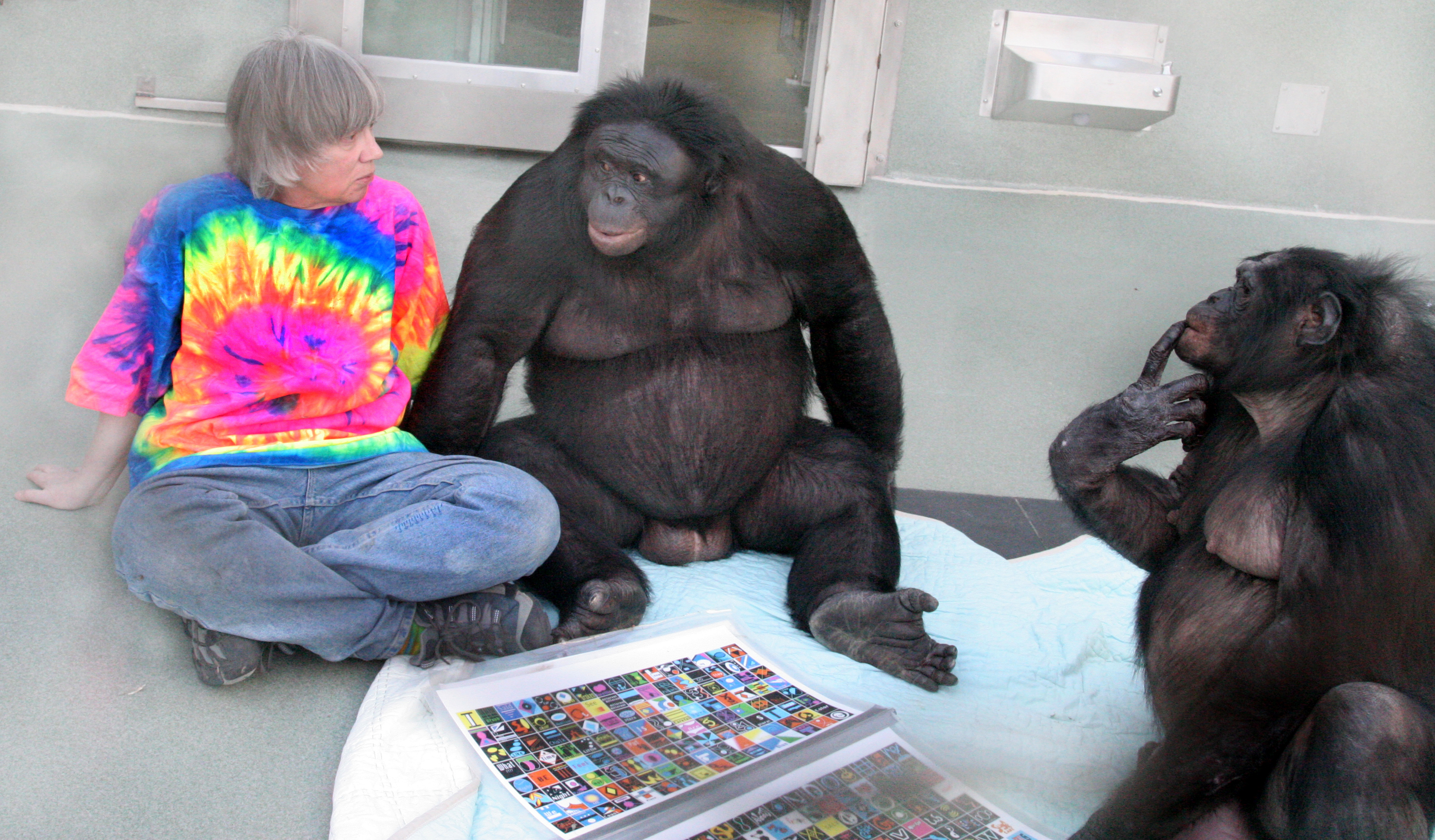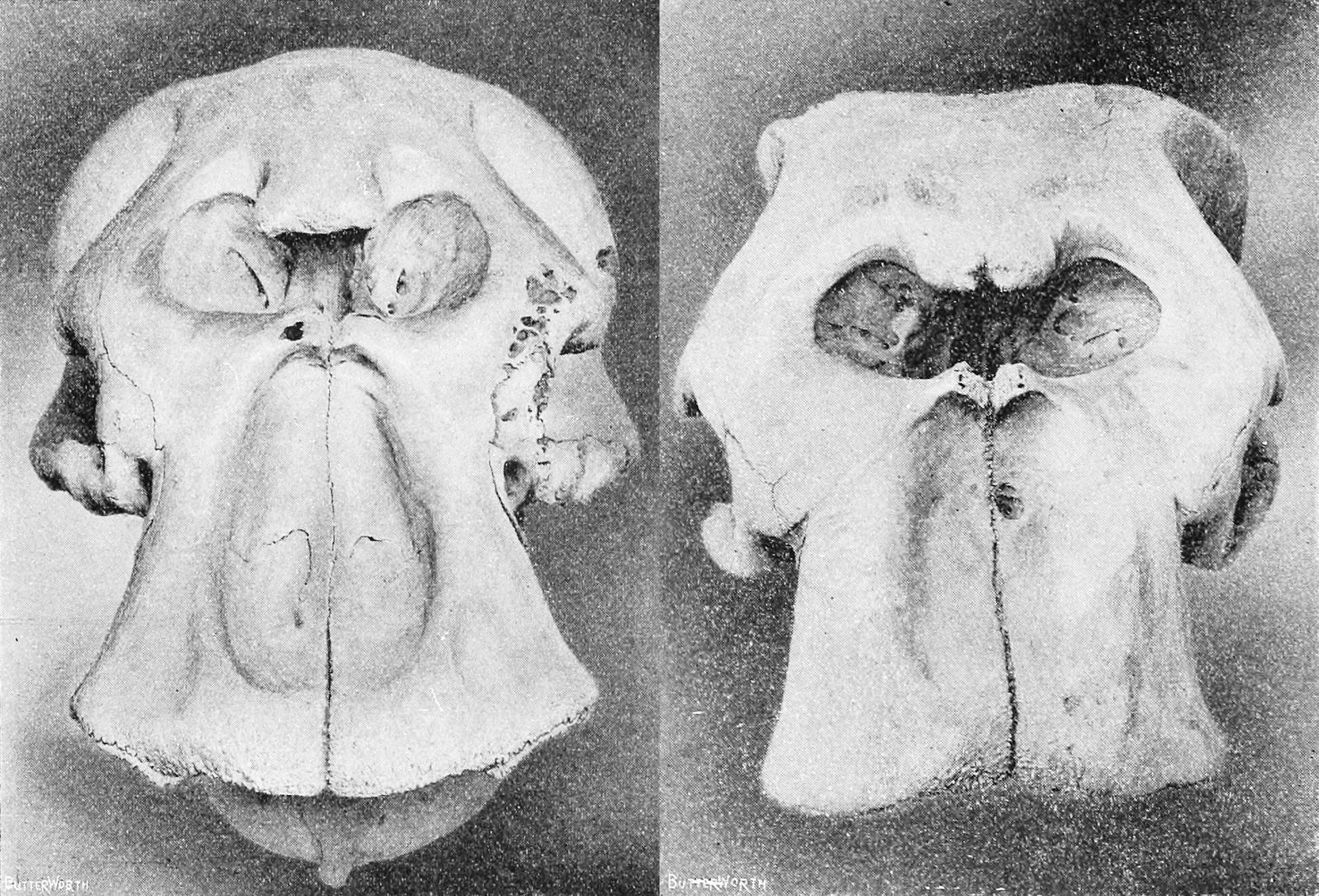|
Iyaelima People
Iyaelima people are an ethnic group with a population of about 2,500 that live in eight settlements in the southern part of the Salonga National Park (SNP) in the Democratic Republic of the Congo. They belong to the Mongo group of Bantu peoples. Although they practice slash-and-burn agriculture and hunt for bushmeat, they have little impact on the environment. The Iyaelima never kill bonobos, an ape closely related to humans whose population is much higher in Iyaelima territory than elsewhere. Location The Salonga National Park was established as the Tshuapa National Park in 1956, and gained its present boundaries with a 1970 presidential decree by President Mobutu Sese Seko. It was registered as a UNESCO World Heritage Site in 1984. Most of the Salonga National Park is accessible only via river. The region in the southwest of the park occupied by the Iyaelima is accessible via the Lokoro River, which flows through the center. The Lokolo River defines the northern boundary and ... [...More Info...] [...Related Items...] OR: [Wikipedia] [Google] [Baidu] |
Salonga National Park
Salonga National Park is a national park in the Democratic Republic of the Congo located in the Congo River basin. It is Africa's largest tropical rainforest reserve covering about 36,000 km2 or . It extends into the provinces of Mai Ndombe, Equateur, Kasaï and Sankuru. In 1984, the national park was inscribed on the UNESCO World Heritage List for its protection of a large swath of relatively intact rainforest and its important habitat for many rare species. In 1999, the site has been listed as endangered due to poaching and housing construction. Following the improvement in its state of conservation, the site was removed from the endangered list in 2021. Geography The park is in an area of rainforest about halfway between Kinshasa, the capital, and Kisangani. There are no roads and most of the park is accessible only by river. Sections of the national park are almost completely inaccesible and have never been systematically explored. The southern region inhabited by the I ... [...More Info...] [...Related Items...] OR: [Wikipedia] [Google] [Baidu] |
World Wildlife Fund
The World Wide Fund for Nature Inc. (WWF) is an international non-governmental organization founded in 1961 that works in the field of wilderness preservation and the reduction of human impact on the environment. It was formerly named the World Wildlife Fund, which remains its official name in Canada and the United States. WWF is the world's largest conservation organization, with over five million supporters worldwide, working in more than 100 countries and supporting around 3,000 conservation and environmental projects. They have invested over $1 billion in more than 12,000 conservation initiatives since 1995. WWF is a foundation with 65% of funding from individuals and bequests, 17% from government sources (such as the World Bank, DFID, and USAID) and 8% from corporations in 2020. WWF aims to "stop the degradation of the planet's natural environment and to build a future in which humans live in harmony with nature." The Living Planet Report has been published every tw ... [...More Info...] [...Related Items...] OR: [Wikipedia] [Google] [Baidu] |
Ethnic Groups In The Democratic Republic Of The Congo
This article is about the demographic features of the population of the Democratic Republic of the Congo, including ethnicity, education level, health, economic status, religious affiliations and other aspects of the population. As many as 250 ethnic groups have been distinguished and named. The most numerous people are the Luba, Mongo, and Bakongo. Although 700 local languages and dialects are spoken, the linguistic variety is bridged both by the use of French, and the intermediary languages Kikongo ya leta, Tshiluba, Swahili, and Lingala. Population The CIA World Factbook estimated the population to be over 105 million as of 2022 (the exact number being 108,407,721), now exceeding that of Vietnam (with 98,721,275 inhabitants as of 2020) and ascending the country to the rank of 14th most populous in the world. The proportion of children below the age of 14 in 2020 was 46.38%, 51.15% of the population was between 15 and 65 years of age, while 2.47% was 65 years or olde ... [...More Info...] [...Related Items...] OR: [Wikipedia] [Google] [Baidu] |
Bonobo
The bonobo (; ''Pan paniscus''), also historically called the pygmy chimpanzee and less often the dwarf chimpanzee or gracile chimpanzee, is an endangered great ape and one of the two species making up the genus '' Pan,'' the other being the common chimpanzee (''Pan troglodytes''). While bonobos are now recognized as a distinct species in their own right, they were initially thought to be a subspecies of chimpanzee (''Pan troglodytes)'' due to the physical similarities between the two species. Taxonomically, the members of the chimpanzee/bonobo subtribe Panina (composed entirely by the genus '' Pan'') are collectively termed ''panins''. The bonobo is distinguished by relatively long legs, pink lips, dark face, tail-tuft through adulthood, and parted long hair on its head. The bonobo is found in a area of the Congo Basin in the Democratic Republic of the Congo, Central Africa. The species is frugivorous and inhabits primary and secondary forests, including seasonally inundat ... [...More Info...] [...Related Items...] OR: [Wikipedia] [Google] [Baidu] |
Lake Nkantotsha
A lake is an area filled with water, localized in a basin, surrounded by land, and distinct from any river or other outlet that serves to feed or drain the lake. Lakes lie on land and are not part of the ocean, although, like the much larger oceans, they do form part of the Earth's water cycle. Lakes are distinct from lagoons, which are generally coastal parts of the ocean. Lakes are typically larger and deeper than ponds, which also lie on land, though there are no official or scientific definitions. Lakes can be contrasted with rivers or streams, which usually flow in a channel on land. Most lakes are fed and drained by rivers and streams. Natural lakes are generally found in mountainous areas, rift zones, and areas with ongoing glaciation. Other lakes are found in endorheic basins or along the courses of mature rivers, where a river channel has widened into a basin. Some parts of the world have many lakes formed by the chaotic drainage patterns left over from the ... [...More Info...] [...Related Items...] OR: [Wikipedia] [Google] [Baidu] |
Juvenile Bonobo
{{Disambiguation ...
Juvenile may refer to: *Juvenile status, or minor (law), prior to adulthood *Juvenile (organism) * Juvenile (rapper) (born 1975), American rapper * ''Juvenile'' (2000 film), Japanese film * ''Juvenile'' (2017 film) * Juvenile (greyhounds), a greyhound competition *Juvenile particles, a type of volcanic ejecta *A two-year-old horse in horse racing terminology See also *" The Juvenile", a song by Ace of Base * Juvenile novel **Any of " Heinlein juveniles" *Juvenile delinquency *Juvenilia, works by an author while a youth *Juvenal (other) Juvenal was a poet. Juvenal or Juvenals may also refer to: * Juvenal (name), and persons with the name * Juvenals, a student society * An immature bird {{disambiguation ... [...More Info...] [...Related Items...] OR: [Wikipedia] [Google] [Baidu] |
Forest Elephant
The African forest elephant (''Loxodonta cyclotis'') is one of the two living African elephant species. It is native to humid forests in West Africa and the Congo Basin. It is the smallest of the three living elephant species, reaching a shoulder height of . Both sexes have straight, down-pointing tusks, which erupt when they are 1–3 years old. It lives in family groups of up to 20 individuals. Since it forages on leaves, seeds, fruit, and tree bark, it has been referred to as the 'megagardener of the forest'. It contributes significantly to maintain the composition and structure of the Guinean Forests of West Africa and the Congolese rainforests. The first scientific description of the species was published in 1900. During the 20th century, overhunting caused a sharp decline in population, and by 2013 it was estimated that less than 30,000 individuals remained. It is threatened by habitat loss, fragmentation, and poaching. The conservation status of populations varies across ... [...More Info...] [...Related Items...] OR: [Wikipedia] [Google] [Baidu] |
Giant Forest Hog
The giant forest hog (''Hylochoerus meinertzhageni''), the only member of its genus (''Hylochoerus''), is native to wooded habitats in Africa and is generally considered the largest wild member of the pig family, Suidae; however, a few subspecies of the wild boar can reach an even larger size. Despite its large size and relatively wide distribution, it was first described only in 1904. The specific name honours Richard Meinertzhagen, who shot the type specimen in Kenya and had it shipped to the Natural History Museum in England. Description The giant forest hog is, on average, the largest living species of suid. Adults can measure from in head-and-body length, with an additional tail length of . Adults stand in height at the shoulder, and can weigh from .Novak, R. M. (editor) (1999). ''Walker's Mammals of the World.'' Vol. 2. 6th edition. Johns Hopkins University Press, Baltimore. pp. 1059–1060. Kingdon, J. (1997). ''The Kingdon Guide to African Mammals.'' Academic Press ... [...More Info...] [...Related Items...] OR: [Wikipedia] [Google] [Baidu] |
Colobus
Black-and-white colobuses (or colobi) are Old World monkeys of the genus ''Colobus'', native to Africa. They are closely related to the red colobus monkeys of genus '' Piliocolobus''. There are five species of this monkey, and at least eight subspecies. They are generally found in high-density forests where they forage on leaves, flowers and fruit. Social groups of colobus are diverse, varying from group to group. Resident-egalitarian and allomothering relationships have been observed among the female population. Complex behaviours have also been observed in this species, including greeting rituals and varying group sleeping patterns. Colobi play a significant role in seed dispersal. Etymology The word "colobus" comes from Greek (''kolobós'', "docked", "maimed"), so named because the thumb is stump-like. Taxonomy *Genus ''Colobus'' ** Black colobus, ''C. satanas'' ***Gabon black colobus, ''C. s. anthracinus'' ***Bioko black colobus, ''C. s. satanas'' ** Angola colobus, ''C. ... [...More Info...] [...Related Items...] OR: [Wikipedia] [Google] [Baidu] |
Mangabey
Mangabeys are West-African Old World monkeys, with species in three of the six genera of tribe Papionini. The more typical representatives of '' Cercocebus'', also known as the white-eyelid mangabeys, are characterized by their bare, upper eye-lids which are lighter than their facial skin colouring, and the uniformly coloured hairs of the fur. Members of '' Lophocebus'', the crested mangabeys, tend to have dark skin, eyelids that match their facial skin, and crests of hair on their heads. A new species, the highland mangabey, was discovered in 2003 and was initially placed in ''Lophocebus''. The genus '' Rungwecebus'' was later created for this species. ''Lophocebus'' and ''Cercocebus'' were once thought to be very closely related, so much so that all the species were in one genus. However, the species within genus ''Lophocebus'' are now thought to be more closely related to the baboons in genus ''Papio'', while the species within genus ''Cercocebus'' are more closely relate ... [...More Info...] [...Related Items...] OR: [Wikipedia] [Google] [Baidu] |
Institut Congolais Pour La Conservation De La Nature
The ''Institut Congolais pour la Conservation de la Nature'' ( English; "Congolese Institute for Nature Conservation") is a Congolese governmental partner tasked with the protection and conservation of the Virunga National Park and Kahuzi-Biega National Park, both UNESCO World Heritage Sites in the Democratic Republic of Congo. Members of the ICCN are charged with the overall protection of the parks and the endangered mountain gorilla The mountain gorilla (''Gorilla beringei beringei'') is one of the two subspecies of the eastern gorilla. It is listed as endangered by the IUCN as of 2018. There are two populations: One is found in the Virunga volcanic mountains of Centr .... The ICCN works with various national and international NGO partners. References External links * *http://www.fieldmuseum.org/congo/insticcn.html The Dian Fossey Gorilla Fund Government of the Democratic Republic of the Congo Universities in the Democratic Republic of the Congo {{Africa-o ... [...More Info...] [...Related Items...] OR: [Wikipedia] [Google] [Baidu] |






